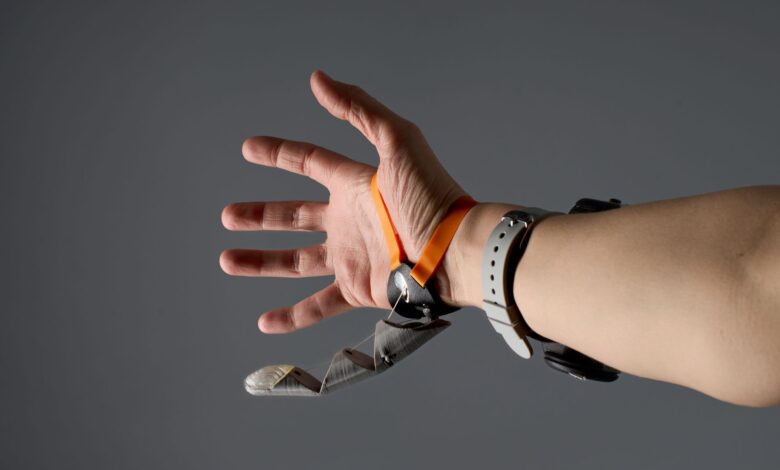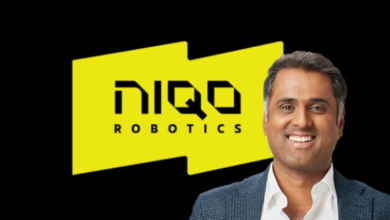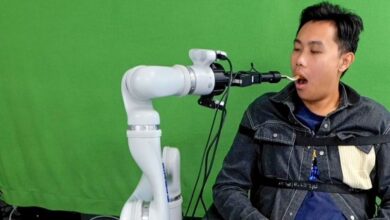Robotic ‘Third Thumb’ helps perform challenging tasks single-handedly

A new decade of motor augmentation has arrived, especially with rapidly advancing technologies in robotics and artificial intelligence.
Now, a team of researchers at the University of Cambridge, led by Professor Tamar Makin from the Medical Research Council (MRC) Cognition and Brain Sciences Unit, in collaboration with Dani Clode devised the ‘Third Thumb’.
The Third Thumb is an extra robotic thumb aimed at increasing the wearer’s range of movement, as per a statement by the scientists. This enhanced the wearer’s grasping abilities and extended the carrying capacity of the hand.
Wearable technology paves the way for consumers to execute tasks that otherwise may seem tricky or challenging to handle and sometimes impossible to accomplish.
Performing complex tasks via robot thumb
Disabled individuals would especially benefit from this as the device can help them perform complex tasks with just one hand without the need to harmonize with other individuals.
Professor Tamar Makin stated that technology is changing the very definition of what it means to be human, with machines increasingly becoming a part of everyday lives, and even one’s mind and body.
“These technologies open up exciting new opportunities that can benefit society, but it’s vital that we consider how they can help all people equally, especially marginalized communities who are often excluded from innovation research and development,” Makin added.
“To ensure everyone will have the opportunity to participate and benefit from these exciting advances, we need to explicitly integrate and measure inclusivity during the earliest possible stages of the research and development process.”
Envision an individual sliding on the device on the opposite side of the palm to the biological thumb. The robotic thumb is controlled by a pressure sensor which is positioned beneath each big toe or foot.
According to the statement, pressure from the right toe pulls the Thumb across the hand, while the pressure exerted with the left toe pulls the Thumb up toward the fingers. By applying pressure with their toes, users can move the Thumb across their hand or up toward their fingers.
Trial with participants at Royal Society Summer Science Exhibition
The study was conducted in 2022 at the annual Royal Society Summer Science Exhibition where 596 participants belonging to different age groups from three to 96 years old and backgrounds were handed the device. They were given a minute to acquaint themselves with the Thumb ahead of performing tasks such as object manipulation.
The vast majority of participants were able to use the device successfully within the first minute, demonstrating the ease of learning using the Third Thumb.
The subjects were tasked with two activities with the first involving picking up pegs from a pegboard one at a time using the Thumb and placing them in a basket. Participants were instructed to move as many pegs as they could in a span of 60 seconds. A total of 333 participants completed this task.
The second task dictated the user to manipulate and move five or six different foam objects within 60 seconds. The objects ranged in size and shape which demanded different manipulations to be employed with elevations in dexterity. A total of 246 participants completed this task.
The study noted that almost everyone could use the device immediately. Within the first minute, 98 percent of participants successfully manipulated objects with the Third Thumb, with only 13 unable to perform the task.
Dani said that augmentation is about designing a new relationship with technology—creating something that extends beyond being merely a tool to becoming an extension of the body itself.
“Given the diversity of bodies, it’s crucial that the design stage of wearable technology is as inclusive as possible. It’s equally important that these devices are accessible and functional for a wide range of users. Additionally, they should be easy for people to learn and use quickly.”
Co-author Lucy Dowdall, also from the MRC Cognition and Brain Science Unit, added that in the case of motor augmentation or even broader human-machine interactions if these are to be successful, they’ll need to integrate seamlessly with the user’s motor and cognitive abilities.
“We’ll need to factor in different ages, genders, weights, lifestyles, disabilities – as well as people’s cultural, and financial backgrounds, and even likes or dislikes of technology. Physical testing of large and diverse groups of individuals is essential to achieve this goal.”
The study was published earlier today [May 29, 2024] in the journal – Science Robotics.
ABOUT THE EDITOR
Shubhangi Dua As a quirky and imaginative multi-media journalist with a Masters in Magazine Journalism, I’m always cooking up fresh ideas and finding innovative ways to tell stories. I’ve dabbled in various realms of media, from wielding a pen as a writer to capturing moments as a photographer, and even strategizing on social media. With my creative spirit and eye for detail, I’ve worked across the dynamic landscape of multimedia journalism and written about sports, lifestyle, art, culture, health and wellbeing at Further Magazine, Alt.Cardiff and The Hindu. I’m on a mission to create a media landscape that’s as diverse as a spotify playlist. From India to Wales and now England, my journey has been filled with adventures that inspire my paintings, cooking, and writing.



